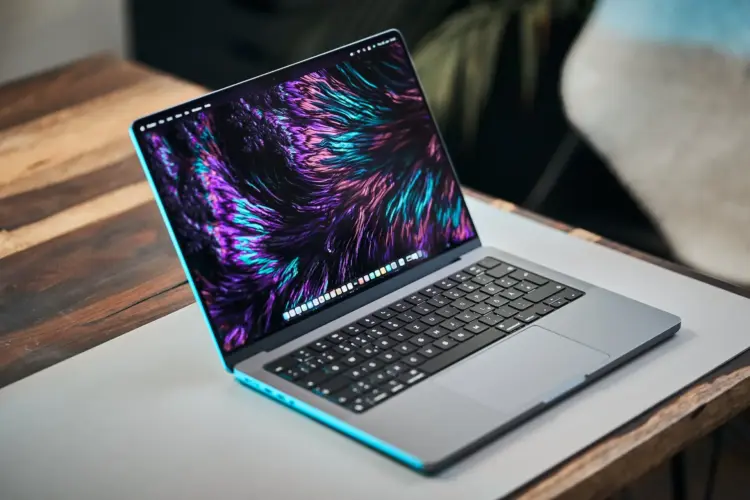
How to Deal with a MacBook Ghosting Screen
Your MacBook is an essential tool, providing both functionality and reliability. However, encountering issues like a ghosting screen can be incredibly frustrating. This guide aims

Dealing with a cracked bottom on your laptop can be a frustrating experience, but with the right knowledge and actions, you can effectively repair and protect your device. This article provides a comprehensive guide on understanding the problem, immediate actions to take, repair solutions, preventive measures, professional repair options, and more to ensure the longevity of your laptop.
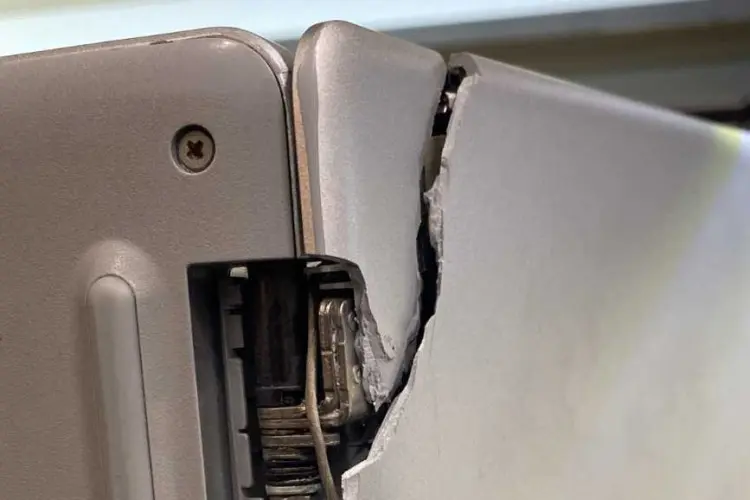
Photo via Volta PC Upgrade & Repair
Before attempting any repairs, it’s crucial to determine the nature of the crack on your laptop’s bottom. Cracks can range from superficial scratches to deep fractures that may affect the internal components. A visual inspection will help categorize the crack and guide the appropriate course of action.
It’s important to note that most standard warranties do not cover accidental damage, such as cracked or broken glass. This means that identifying the type of crack is not only crucial for repair but also for understanding potential warranty implications.
Laptop cracks can arise from a variety of incidents, but some are more common than others. Accidental drops are a leading cause, as the impact can create significant stress on the laptop’s structure, leading to cracks. Another frequent culprit is pressure or force applied to the laptop, such as when an object is placed on top of a closed laptop or when it’s packed too tightly in a bag.
It’s crucial to understand the common causes of cracks to take preventative measures and avoid further damage to your laptop.
A cracked bottom on your laptop can lead to a myriad of performance issues. The severity of the impact largely depends on the extent of the damage. For instance, a minor crack might only be a cosmetic concern, but a deeper fracture could affect the laptop’s structural integrity, leading to more serious problems.
It’s crucial to understand that even a small crack can escalate into significant performance degradation over time. Regular monitoring and prompt action are essential to prevent further damage.
In some cases, a crack can affect the laptop’s ability to power on or stay on, as well as the functionality of ports and connectors. If the laptop has suffered a fall, like the MacBook Pro in a reported incident, there could be unseen damage. An impact can sometimes even cause solder joints to crack on one of the boards, which might not be immediately noticeable but can lead to intermittent issues or complete failure.
After an unfortunate incident with your laptop, it’s crucial to assess the damage carefully before taking any further steps. Start with a visual inspection to look for any visible damage, such as cracks, dents, or broken hinges. Pay special attention to the screen for any cracks or discoloration.
Power issues following a drop can indicate internal damage, which might require more than a superficial fix.
Next, attempt to power on the laptop. If it does not open or shows signs of malfunction, this could point to internal issues. Documenting the extent of the damage will help in deciding whether a DIY fix is feasible or if professional help is needed. Use the following checklist to ensure you cover all bases:
Once you’ve assessed the damage to your laptop, the next step is to secure any loose pieces to prevent them from causing further damage or getting lost. This is particularly important for components that are essential to the laptop’s functionality, such as screws or brackets that may have come loose around the hinge area.
It’s crucial to handle these components with care, as improper handling can lead to further damage. If you’re unsure about any step, it’s better to seek professional help rather than risking additional harm to your laptop.
Once you’ve assessed the damage and secured any loose pieces, it’s crucial to prevent further damage to your laptop. Avoid using the laptop until it has been properly repaired, as continued use can exacerbate the issue.
It’s important to handle your laptop with care during this time. Even small movements can worsen a crack, especially if the laptop’s structure is compromised.
If you’re comfortable with minor repairs and have the right tools, such as a Plastic Spudger or Pry Tools, you can attempt to stabilize the crack temporarily. However, be cautious not to apply too much force, which could cause additional damage.
Before attempting any repairs on your laptop, it’s crucial to have the right tools on hand. Gather the necessary tools to ensure you can safely open and fix your laptop without causing further damage. A basic repair kit should include a set of precision screwdrivers, plastic spudgers, and tweezers. These tools will help you to carefully dismantle your laptop and handle delicate components.
Remember, using the correct tools not only makes the repair process easier but also prevents damage to your laptop’s internal parts. Improper tools can strip screws, crack components, or cause static damage.
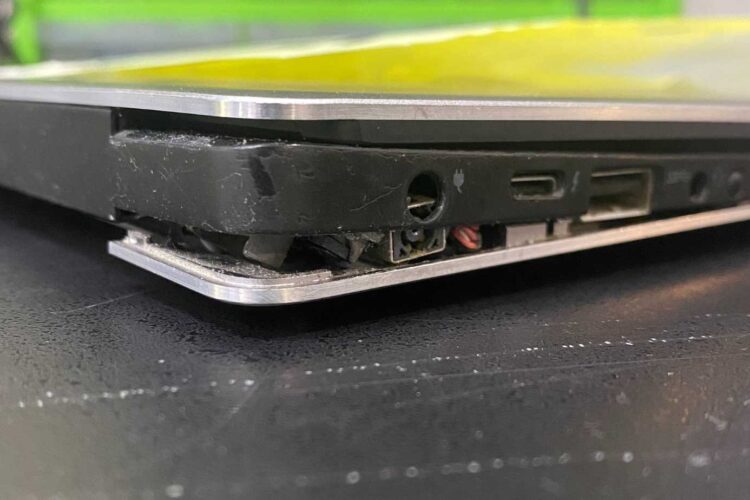
Once you’ve gathered all the necessary tools, it’s time to begin the repair process. Ensure your laptop is powered off and unplugged before starting any repair work to avoid electric shock or further damage.
Remember, patience and precision are key. Rushing through the repair can result in more harm than good, so take your time and follow each step carefully.
If at any point you feel unsure or the damage seems too complex, it’s advisable to seek professional help. A botched repair job can lead to more serious issues and potentially void any existing warranty.
While many minor issues with your laptop can be addressed through DIY methods, certain situations require the expertise of a professional. If the crack on your laptop’s bottom is extensive or if you’re unsure about any step in the repair process, it’s time to consult an expert. Professional technicians have the necessary tools and experience to handle complex repairs that might be beyond the scope of DIY fixes.
Professional repair ensures that your laptop is handled with care and the repair is done correctly, potentially saving you from additional costs in the long run. However, before you decide to go this route, it’s important to weigh the costs and benefits.
When considering professional help, keep in mind factors such as the type of repair, parts availability, and labor rates. These can all influence the overall cost and turnaround time for the repair.
When your laptop suffers from a cracked bottom, selecting the right repair service is crucial for a reliable fix. Research and compare different repair options to ensure you choose a service that offers the expertise and value you need. Look for services that specialize in your laptop’s brand and model, and check their customer reviews for satisfaction rates.
It’s essential to understand the service’s repair process and whether they provide a warranty for the work done. A transparent repair service should offer a detailed explanation of the issues and the proposed solutions.
Finally, consider the convenience of the service location and whether they offer any additional benefits like data backup or on-site repairs. Making an informed decision can save you time and money, and help ensure your laptop returns to optimal condition.
Estimating the cost of repairing a cracked bottom on your laptop can be challenging without a professional assessment. However, understanding the factors that influence the price can help you set a budget. The severity of the crack, the model of the laptop, and the type of materials needed are key determinants of the final cost.
It’s essential to consider both the parts and labor costs when calculating the total expense. Some repairs may seem simple but require specialized tools or expertise that can increase the price.
Here’s a basic breakdown of potential costs:
Remember, these are estimated figures and the actual cost may vary. It’s advisable to get quotes from several repair services to find the best deal.
When dealing with laptop repairs, understanding the scope of your warranty is crucial. Most manufacturers offer a standard warranty that covers hardware malfunctions and defects but not accidental damage, such as a cracked bottom. For instance, Dell’s policy generally considers cracked or broken glass as accidental damage, which falls outside the standard warranty coverage.
Before seeking a repair, review your warranty terms carefully. If your laptop is still under warranty, contact the manufacturer to confirm what is covered. In cases where the warranty does not apply, you may need to consider a paid repair service or explore third-party insurance options.
It’s important to keep all documentation related to your laptop’s purchase and warranty. This information can be vital when determining the eligibility for a repair claim.
If you’re considering a professional repair, inquire about any additional guarantees on the service provided. Some repair shops offer their own warranties on parts and labor, which can provide extra peace of mind.
Investing in a protective case can be a simple yet effective way to shield your laptop from physical damage. High-quality materials and design are crucial for ensuring that the case provides adequate protection against drops, scratches, and spills. When selecting a case, consider factors such as the material, padding, and whether it offers water resistance.
For those who travel frequently or commute with their laptop, a case with a handle and waterproof features can be particularly beneficial. It’s not just about preventing cracks; it’s also about minimizing the risk of water damage and cushioning the device from the jolts and jostles of everyday movement.
While no case can provide 100% protection, the right choice can significantly reduce the likelihood of damage. It’s an investment in the longevity of your device.
Here are some key features to look for in a laptop case:
Proper handling and storage of your laptop are crucial to preventing physical damage, including cracks. Always carry your laptop in a padded case or sleeve to cushion it from impacts. When not in use, store your laptop in a clean, dry environment away from extreme temperatures, which can cause materials to expand and contract, leading to cracks.
Remember, the way you handle your laptop today can determine its longevity. Simple precautions can extend the life of your device significantly.
To ensure the longevity of your laptop, it’s crucial to be aware of the common mistakes that can lead to damage. Avoid placing heavy objects on top of your laptop, as this can cause pressure cracks or damage the internal components. Be mindful of where you set up your workstation; unstable surfaces can lead to falls and subsequent cracks.
Remember, prevention is better than cure. Taking simple precautions can save you from the hassle and expense of repairs.
Lastly, be cautious about attempting DIY repairs if you’re not confident in your skills. As highlighted in the guide, ‘Attempting cracked screen repairs without qualifications voids warranties and risks costly mistakes.’ It’s often safer and more cost-effective to consult a professional if you’re unsure.
Choosing the right laptop case can be the difference between a one-time accident and a well-protected device. A great laptop backpack protects your tech, is comfortable to carry, and looks good, too. When selecting a case, consider the size of your laptop, the level of protection needed, and your personal style.
Durability and functionality should be the cornerstone of your choice. A well-padded interior, water-resistant material, and snug fit are essential features to look for.
For those who prefer structured recommendations, here’s a list of attributes to consider when shopping for a laptop case:
Remember, the best case for you is one that balances protection with convenience and aesthetics.
While a cracked bottom on your laptop is a significant concern, the screen is another vulnerable component that requires protection. Screen protectors can shield the display from scratches and minor impacts, potentially preventing cracks from forming or worsening.
Choosing the right screen protector depends on your laptop usage and the level of protection needed. Consider factors such as material durability, screen clarity, and additional features like anti-glare or privacy when making your selection.
Remember, while screen protectors are an excellent way to safeguard your laptop’s display, they are not a substitute for careful handling and proper maintenance. Regularly inspect your screen protector for any signs of damage and replace it when necessary to ensure ongoing protection.
Laptop cooling pads and stands are not just accessories; they are essential tools that can significantly extend the life of your laptop by preventing overheating. Overheating is a common issue that can lead to hardware failure and reduced performance over time. By elevating the laptop and providing additional airflow, these accessories can help maintain optimal operating temperatures.
Cooling pads often come with multiple fan speed settings, allowing you to find the perfect balance between cooling efficiency and noise level.
When selecting a cooling pad or stand, consider the size of your laptop, the number of fans, adjustability features, and any additional functionalities like USB ports or lighting. These factors will ensure you get the most out of your accessory and provide your laptop with the best possible protection against heat-related damage.
Before attempting any physical repairs on your laptop, it’s crucial to safeguard your data. Backing up your data ensures that you won’t lose important files in case the repair process goes awry or if the laptop’s condition worsens. There are several methods to back up your data effectively:
It’s advisable to perform regular backups even when your laptop is functioning properly. This habit minimizes the risk of data loss due to unexpected hardware failures or accidents.
Remember to verify the integrity of the backup by checking if the files can be accessed and are not corrupted. After securing your data, you can proceed with the repair process with peace of mind.
Once you’ve backed up your data, running diagnostic tests is a crucial next step in assessing the health of your laptop. These tests can help pinpoint hardware issues that might be related to the crack or other underlying problems. Most operating systems come with built-in diagnostic tools, and there are also third-party software options available.
Diagnostic tests can provide a detailed report of your laptop’s condition, which is invaluable for deciding on repair strategies or if professional help is needed.
Here’s a simple list of actions to take when running diagnostics:
Keeping track of your laptop’s health is crucial, especially after dealing with physical damage like a cracked bottom. Monitoring software can provide real-time insights into your system’s performance and potential hardware issues. These tools can alert you to overheating, battery wear, and other conditions that may worsen a crack or indicate internal damage.
Regular use of health monitoring software can extend the life of your laptop by helping you to identify and address issues before they lead to serious damage.
Here’s a list of features to look for in laptop health monitoring software:
Choosing the right software will depend on your specific needs and the compatibility with your laptop’s operating system. It’s advisable to select a program that offers a comprehensive set of features to ensure thorough monitoring of your device’s condition.
Understanding your laptop’s warranty is crucial when dealing with repairs. Most manufacturers offer a standard warranty that covers hardware malfunctions and defects. However, accidental damage, like a cracked bottom, is often not included. To navigate the warranty claim process effectively, start by reviewing the warranty terms provided at the time of purchase.
It’s important to act promptly as warranty periods are limited. Delaying could mean missing out on potential coverage.
Remember that warranty claims can be denied if the damage is deemed outside of the warranty scope. In such cases, exploring professional repair options or utilizing insurance may be necessary.
Laptop insurance can be a wise investment, especially if you’re prone to accidents or travel frequently with your device. Consider laptop insurance if you rely heavily on your laptop for work or school, as it can cover damages that go beyond the manufacturer’s warranty.
Remember, the cost of insurance should be weighed against the value of your laptop and the likelihood of events that could lead to damage or loss.
Before purchasing insurance, compare different plans and read the fine print to understand what is and isn’t covered. Some policies may exclude certain types of damage or require a deductible. Choosing the right insurance plan can save you from unexpected expenses and ensure that your laptop remains a reliable tool for your daily needs.
When your laptop’s warranty has expired, repairs can become a more complex and potentially costly endeavor. Navigating out-of-warranty repairs requires a clear understanding of your options and the costs involved. It’s essential to get quotes from multiple repair services to ensure you’re getting a fair price for the work needed.
Remember, the value of the repair should not exceed the current value of the laptop. If the cost of repairs is too high, it may be more economical to invest in a new device.
In cases where a repair has gone wrong, such as damage by a service technician, you have the right to negotiate. Try to get a fair resolution, whether it’s a partial refund or a discount on future services. If the laptop is beyond repair, the best course of action may be to request a refund and, if possible, retrieve any salvageable components.
Regular maintenance is crucial for extending the lifespan of your laptop and ensuring it runs efficiently. Performing routine checks and cleanups can prevent many common issues that lead to more significant problems down the line.
Consistent battery care is also essential. Avoid leaving your laptop plugged in at all times, and try to keep the battery level between 20% and 80% to maximize its lifespan.
By adhering to these maintenance tips, you can help ensure that your laptop remains in good working condition, potentially saving you from costly repairs or replacements in the future.
Upgrading the components of your laptop can significantly extend its lifespan and improve performance. Consider upgrading the RAM or SSD for a noticeable boost in speed and efficiency. These components are often user-replaceable and can be a cost-effective way to rejuvenate an aging machine.
Before proceeding with any upgrades, ensure compatibility with your laptop’s model. Here’s a quick checklist to follow:
Upgrading your laptop’s components is not only about boosting performance but also about tailoring your device to your specific needs and workflow.
Remember, not all laptops allow for easy upgrades. Some models have integrated components that are not user-replaceable. In such cases, consult your laptop’s manual or manufacturer’s website for guidance. If you’re not comfortable performing the upgrades yourself, seek assistance from a professional.
Keeping abreast of the latest laptop care techniques is crucial for extending the lifespan of your device. It’s not just about handling your laptop with care; it’s also about staying updated with the best practices for maintenance and usage.
By regularly updating your knowledge, you can prevent common issues and respond effectively to new ones as they arise.
Remember, technology evolves rapidly, and so do the methods for keeping it running smoothly. To mitigate this risk, it’s essential to prioritize proper ventilation for your device. Ensure that air vents are free from dust for efficient cooling.
When faced with a cracked bottom on your laptop, a crucial decision is whether to repair or replace the device. Compare the cost of the repair to the cost of purchasing a new one. If the repair costs approach or exceed the value of a new laptop, it may be more economical to invest in a new machine.
When the repair cost exceeds 50% of the replacement cost, it’s often advisable to opt for a new purchase.
Additionally, consider the age of your laptop and the likelihood of future repairs. If your laptop is already several years old, investing in repairs might not be the best long-term solution.
Sometimes, the cost and effort of repairing a laptop may not be justified, especially if the device exhibits certain telltale signs. When critical components like the motherboard or CPU are damaged, it’s often more economical to replace the laptop rather than repair it. Here are some indicators that your laptop might be beyond repair:
If your laptop is old and repairs are costly, it may be more beneficial to invest in a new machine that offers updated features and better performance.
Once you’ve determined that your laptop is beyond repair, it’s crucial to dispose of it responsibly to minimize environmental impact. Electronic waste, or e-waste, can be highly toxic to the environment due to the presence of hazardous substances like lead, mercury, and cadmium.
When disposing of your laptop, aim to do so in a way that ensures these substances do not contaminate the soil or water.
Here are some eco-friendly ways to dispose of your laptop:
Remember, making an eco-friendly disposal not only helps the planet but also complies with local regulations that may penalize improper disposal of electronics.
In conclusion, dealing with a cracked bottom on your laptop can be a frustrating experience, but with the right repair and protection tips, you can prolong the life of your device and prevent further damage. By following the steps outlined in this article, you can ensure that your laptop remains in good condition and continues to serve you well. Remember to prioritize the safety and maintenance of your laptop to avoid costly repairs in the future.
A cracked bottom on a laptop can vary in severity depending on the extent of the damage. It can affect the structural integrity of the laptop and potentially lead to further issues if not addressed promptly.
It is not recommended to continue using a laptop with a cracked bottom as it can worsen the damage and impact the overall performance of the device. It is best to address the issue as soon as possible.
DIY repair can be safe for fixing a cracked bottom on a laptop if done carefully and with the right tools. However, it is important to assess the extent of the damage and consider seeking professional help if unsure.
Using a protective case can help prevent a cracked bottom on your laptop by providing an extra layer of cushioning and protection. It is a recommended preventive measure to avoid damage.
The duration of professional repair for a cracked bottom on a laptop can vary depending on the extent of the damage and the repair service’s workload. It is advisable to inquire about the estimated timeframe when choosing a repair service.
Common causes of cracks on a laptop’s bottom include accidental drops, impacts, excessive pressure, and poor handling. Understanding these factors can help in preventing future damage.
Yes, a cracked bottom can potentially affect the internal components of a laptop by exposing them to external elements and compromising the structural integrity of the device. It is important to address the issue promptly to prevent further damage.
The decision to repair a cracked bottom on an older laptop depends on the extent of the damage, the laptop’s overall condition, and the cost of repair compared to the laptop’s value. It is advisable to assess these factors before making a decision.
Look no further than Volta PC Upgrade & Repair! With a reputation for excellence in laptop repairs, Volta PC Upgrade & Repair offers top-quality services to restore your device to perfect condition. Our skilled technicians are adept at handling all types of laptop repair services, ensuring your laptop returns to you looking as good as new. Don’t let a cracked bottom slow you down; contact Volta PC Upgrade & Repair today for fast, reliable, and expert laptop repair services in Singapore!

Your MacBook is an essential tool, providing both functionality and reliability. However, encountering issues like a ghosting screen can be incredibly frustrating. This guide aims
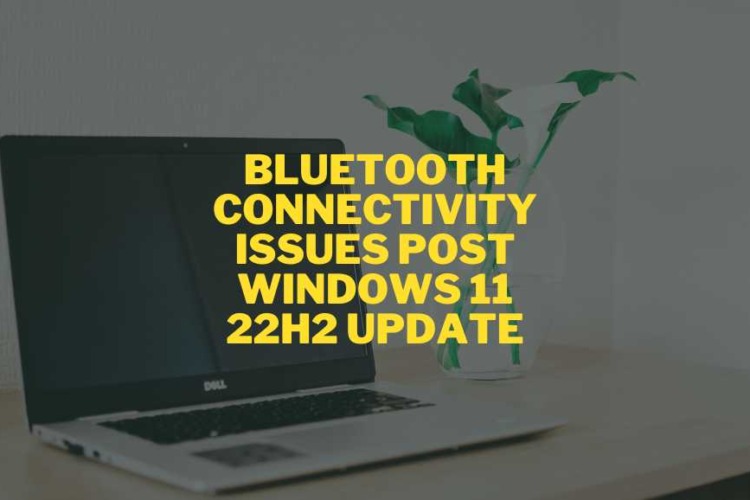
Bluetooth connectivity has become a vital feature for laptop users, facilitating wireless communication with peripherals like headphones, mice, keyboards, and more. However, following the Windows
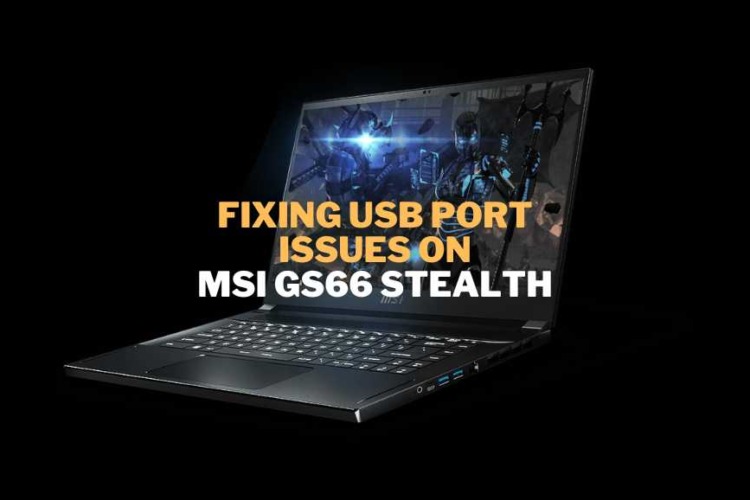
The MSI GS66 Stealth is a powerhouse in the world of gaming laptops, known for its sleek design, powerful performance, and advanced features. It’s a
|
JURONG BRANCH WILL BE SHIFTED TO TAISENG BRANCH ON 1 AUG 2024 |